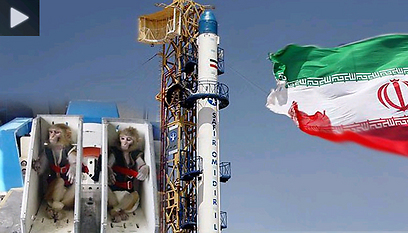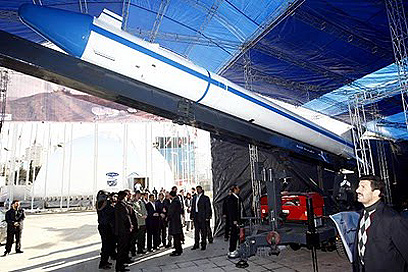In what is described as another step towards Tehran's goal of a manned space flight, Monday's report said the monkey was sent up in a Pishtam (Farsi for explorer) rocket to a height of 120 kilometers (roughly 72 miles).
Related Stories
- Iran opens space program site for first media tour
- Iran launches rocket with monkey doll into space
- 'Iran no longer on track to achieving long-range missile'
The report, citing Iranian Space Agency executive Hamid Fazeli, gave no other details on the timing or location of the launch, but said the monkey returned safely.
Last week, Fazeli said that the agency "has completed all of the prelaunch inspections needed to launch a monkey-manned rocket."
According to him, the mission was scheduled to take place between January 31st and February 10th, when Iran celebrates the Islamic Revolution's 34th year, but the launch was eventually rescheduled to an earlier date.
The Iranian executive noted that "the monkey program will aid our agency in launching a man into space," which Teheran plans to successfully undertake by 2020.

Iranian space monkey launch (Photo: Al-Alam website)
No monkey business
This was not Iran's first attempt at sending a monkey into space. Two years ago the Islamic Republic announced of a similar attempt which failed, but did not divulge any additional information.
However, it seems that the 2010 launch attempted to shoot a 288 kg (roughly 634 pound) monkey aboard a Kavoshgar-5 rocket. The mission was predated by a test launch manned with a doll-monkey.
Prior to the failed 2010 attempt were other attempts at wildlife space travel.
Previously a Kavoshgar-3 rocket laden with worms, a rodent and two turtles was sent into orbit. The animals were closely monitored by Iranian scientists who had loaded cameras into the space capsule, but the animals' fates upon return to earth remain unknown.

Pishtam, the rocket with the monkey on its back
A year ago, Iran sent its first satellite into orbit. The satellite, called Omid (Farsi for hope), was launched on the back of the Iranian expendable space launcher called Safir (Farsi for ambassador).
The event inspired much international discomfort, as concerns arose that Iran's ability to launch a satellite into orbit hinted at its ability to fire long-range ballistic missiles, capable of carrying nuclear warheads.
Since then, Iran has placed two additional satellites into orbit: Rasad, an imaging satellite, launched in June 2011 and Navid, an observation satellite, launched in February 2012. However, Iran has vehemently denied reports that an additional satellite, Fajr, was scheduled to take place last May.
Reuters and the Associated Press contributed to this report.
- Receive Ynetnews updates
directly to your desktop















